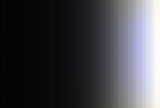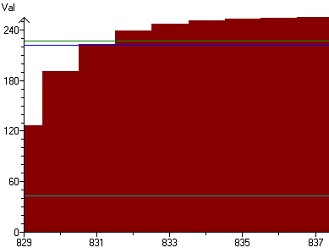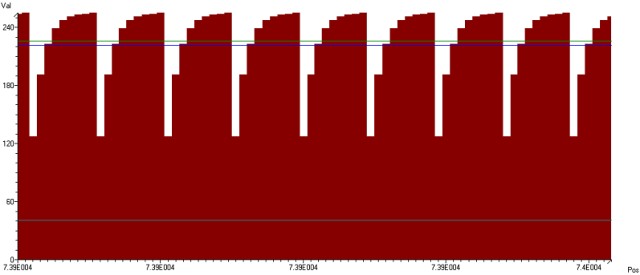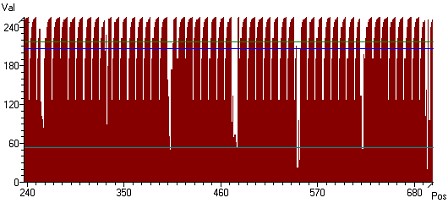Some thoughts on the the dakotas image compression format

blacktowhite fade image

compressed image as a gray scale raw image
The white curve/ marble effect is seen on the image by adjusting the number of pixels per line. For this image they showed up nicely using a width of 936 pixels.
I found the the curve commonly contained the following hex string (Which happens to be 9 bytes long)
7FBF DFEF F7FB FDFE FF Which is normally followed by a similar but more variable curve

A nice graph of the above hex string for the Hex adverse. ( height to file position in base 10)
The curve seem very similar to a histogram used to correct image color. ( gamma curve? )
I did a search for that hex string and stored its position. I then plotted these positions :

A graph of the positon ( height ) of each found byte sequence.
The nice slope seems to suggest that the string occurs at a regular interval through the compressed file.
I believe it is that this curve is storing some data for one line of the image. There is also another data 'curve' stored just after this one. My current guess is one is for color data, the other is brightness.
I found some other images, and I think I am really wrong.

A graph of value/ positon in a compressed all black ( all 0x00 ) image
The all black compressed image consists of 5704 'curves'...

A graph of value/ positon in a compressed all white ( all 0xFF ) image consisting of many more samples to see the extra data that defines the number of black pixels. Somehow.
The all white compressed image also consists of 5704 complete 'curves'. This doesn't include the 'half' curves that are interupted with data.
Tiny Hexer and its built in TMathImage component
and everyone on the camera Board at linux-hacker.net